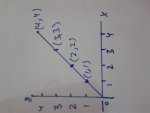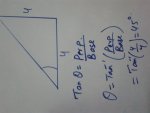Hello
Quick question that i am confused by.
If i have a rotation g that maps line y = x why is this using a -pi/4 for theta specifically? My brain tells me that surely it should be -pi/2 since if you were at say 0,5 you would then be 5,0 as that is a 90 degree turn counter clockwise so -pi/2 ?
I can't seem to visualise in my mind why it is -pi/4
Quick question that i am confused by.
If i have a rotation g that maps line y = x why is this using a -pi/4 for theta specifically? My brain tells me that surely it should be -pi/2 since if you were at say 0,5 you would then be 5,0 as that is a 90 degree turn counter clockwise so -pi/2 ?
I can't seem to visualise in my mind why it is -pi/4


